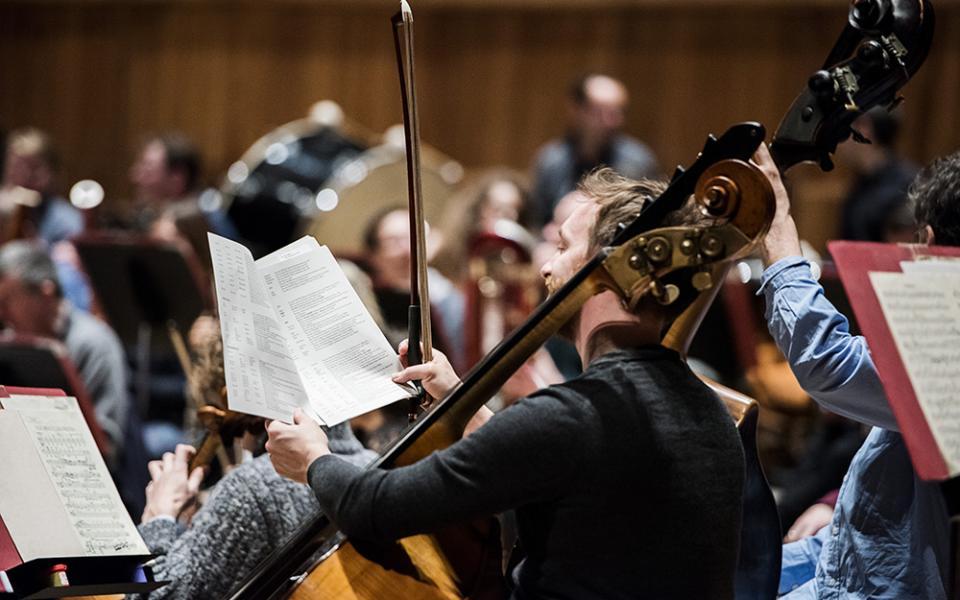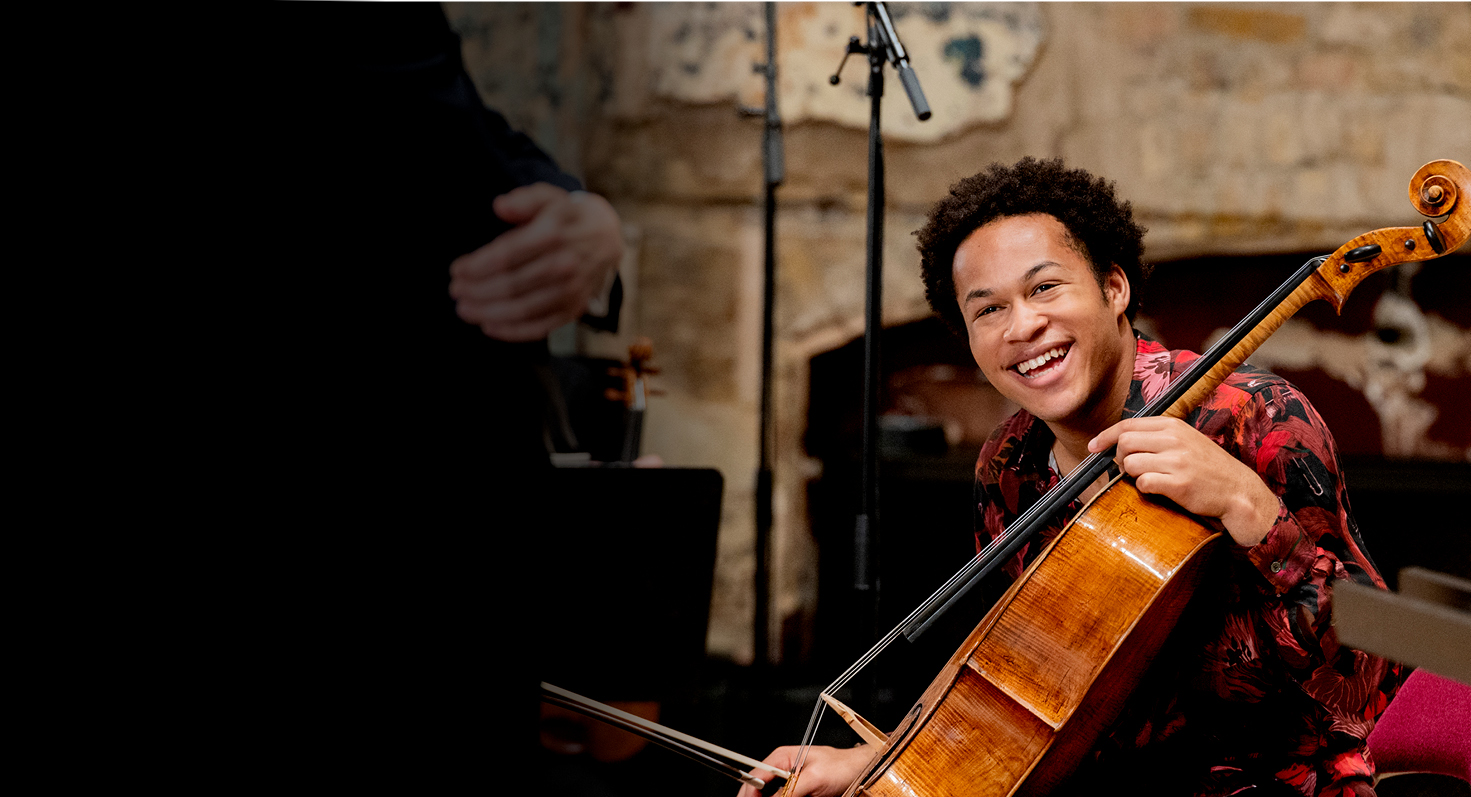The ultimate guide to Pictures at an Exhibition

The Philharmonia Orchestra is committed to bringing you the best musical experience we can – especially during these difficult times. Instead of our scheduled live programme, here is an insightful listening guide to help you and your family enjoy Mussorgsky’s vivid musical gallery tour from your home.
Promenade I
The theme begins on trumpet, joined by a brass chorale, answered by softer strings. A sense of antiquity is created using sturdy sonorities before the theme is played by the full ensemble.
Gnomus (The Gnome)
A scurrying gesture in lower strings and woodwinds is heard twice, ending with an orchestral full stop. The upper woodwinds play a creepy descending line, taken up by the celesta (a keyboard using bells rather than strings) with swooping strings. A heavy idea in the winds is added to the scurrying motif, culminating in nightmarish shivering strings and grotesque wind theme. The creepy idea returns, answered by muted brass, with a frantic flourish to finish.
Promenade II
The theme is played on the horn, decorated by woodwinds and a slow string descant (a higher countermelody).
Il Vecchio Castello (The Old Castle)
Bassoons play over a cello drone, and the saxophone sings out the theme. Strings and woodwinds create a misty, romantic atmosphere. The bassoon takes up the drone before the movement’s life-blood ebbs away, the saxophone uttering a defiant last gasp.
Promenade III
Similar in tone to the first movement, this version ends with a cliff-hanger of slowing pizzicato (plucked) strings.
Tuileries (Dispute d’enfants après jeux – Children’s quarrel after games)
Bustling woodwinds are punctuated by pizzicato strings. There is a smoother, but still animated, violin theme, and the movement builds until the opening ideas return, ending with witty understatement.
Bydło (Cattle)
Ravel’s orchestration begins very quietly to give the impression of oxen arriving from afar, although we now know that Mussorgsky intended the movement to begin forcefully. A trudging texture supports a plangent tuba solo, building to a powerful climax, with snare drum adding a Hardyesque sense of doom. The animals stomp away, with low harp and plucked double bass closing the movement.
Promenade IV
Blustery strings are added to delicate woodwinds to create an autumnal atmosphere, building to a brief climax before leading us into the next movement.
Ballet des poussins dans leurs coques (Ballet of the Unhatched Chicks)
Ravel uses a delicate palette of woodwinds, harps and pizzicato strings, with colourful percussion adding to the playful atmosphere.
“Samuel” Goldenberg und “Schmuyle”
There is a gruff unison statement (all the instruments playing the same material) in lower woodwinds and strings. Woodwind chords support a skittish, muted trumpet line, initially nervy but becoming more urbane before the gruff theme returns. A warmer idea is swiftly curtailed by the emphatic ending.
Limoges, le marché (La grande nouvelle – The Market Place at Limoges)
A busy violin idea conjures up the gossipy marketplace, accentuated by woodwinds and percussion, including celesta. Horns add emphasis but Ravel uses the substantial ensemble with remarkable lightness, passing the scurrying idea between sections.
Catacombæ (Sepulcrum romanum – Catacombs)
Solemn chords for brass, lower woodwinds and basses establish a sepulchral atmosphere. There are striking dynamic contrasts and a brief, mournful trumpet solo.
Cum mortuis in lingua mortua (When a dead language…)
We hear the ‘promenade’ theme, with ethereal strings and delicate woodwinds exuding a hushed, ghostly quality.
Baba-Yagá (La cabane sur des pattes de poules – The Hut on Fowl’s Legs)
Earthy, quick-moving ideas are contrasted with high-pitched interjections, followed by a strident trumpet theme. Competing brass blasts are decorated by the urgent orchestral texture. Ghoulish, fluid flute and an enigmatic bassoon and double bass line are augmented by harp, celesta and shivering strings. A forceful orchestral chord heralds the return of the strident material.
The Knight’s Gate (in the Old Capital of Kiev) or The Great Gate of Kiev
A proud, brass-heavy opening and majestic orchestral theme are juxtaposed with softer woodwinds. Cascades of string and wind notes decorate the brass melody. The lyrical woodwinds return before a shimmering march unveils the main theme, which penetrates the gloom like sunlight burning through mist, building to the work’s triumphant ending.
Programme notes by Joanna Wyld © Philharmonia Orchestra/Joanna Wyld.
Discover more

Musical activity
Learning in isolation? Why not try our musical activity based on the Promenade theme?
Read moreSupport the Philharmonia
Enjoyed this content? We need your help to keep these resources free


